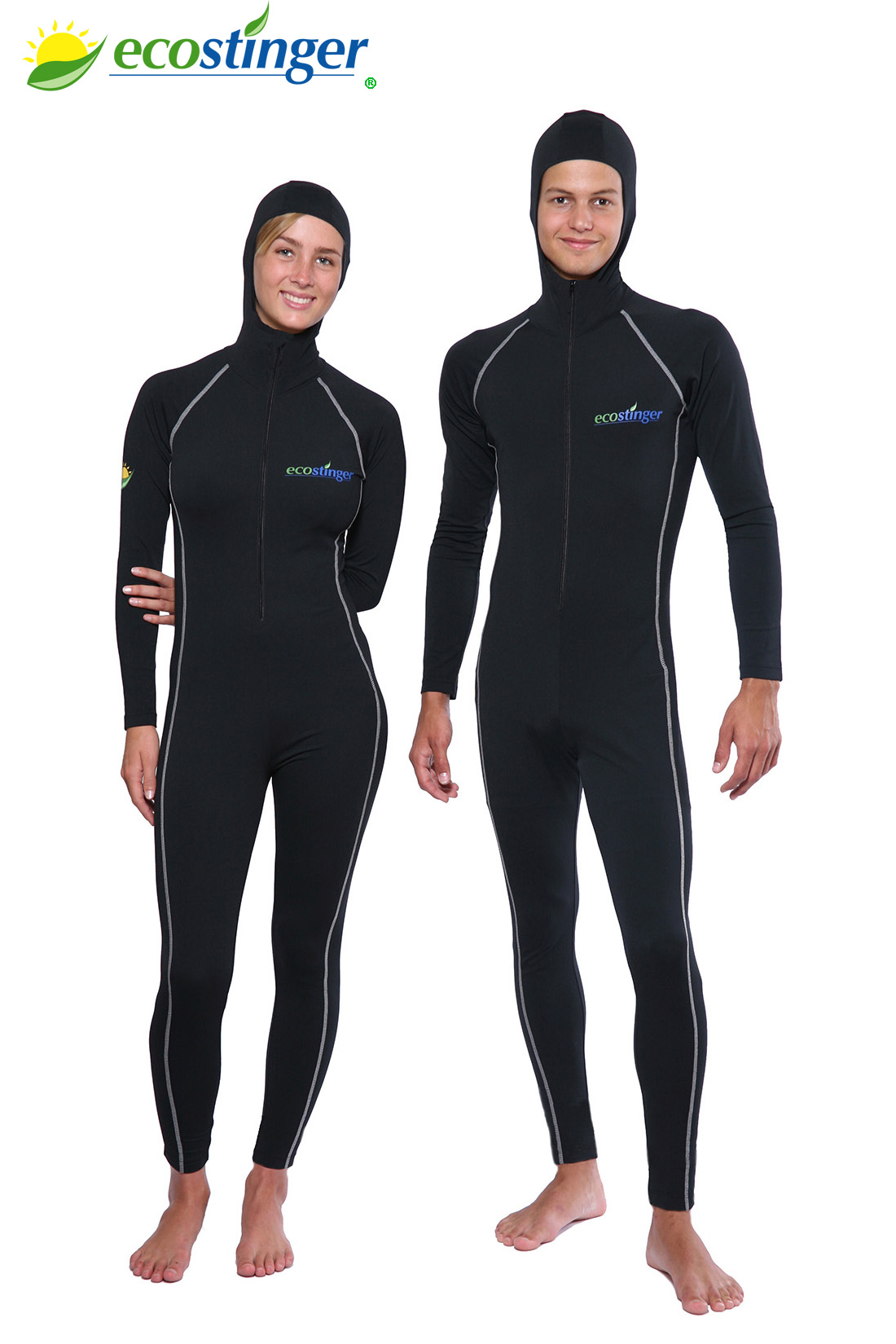UV Protective Swimsuits
Posted by ecostinger on 16th Dec 2016
UV Protective Swimsuits protect your skin from the harsh UV radiation which causes skin damage, sunburn and skin cancer; the same swimsuits also protect your skin against Jellyfish stingers, sea lice and other sea creature, keeping your skin safe underwater as well as above water.
Your skin deserves the best UV Protective Swimsuit which are mainly a full body cover swimsuit covering your torso, arms, legs and neck, and some come equipped with built-in hood for head cover, these provide the best protection in and out of the waters.
Effects of jellyfish stings on the skin
Jellyfish are non-aggressive, free-floating marine animals with transparent bodies and long tentacles. Their tentacles are covered with sacs, usually filled with poison that can cause a painful to life-threating sting. There are four major types of jellyfish, and they include Portuguese man-of-war, sea wasps also known as box jellyfish, lion’s mane and sea nettle.
The reaction to a jellyfish sting depends on a wide range of factors such as age, size, number of tentacles that stung you and the poison’s potency. The pain from the sting can be mild or intense and lasts for several hours or days.
At the site of the sting, your skin may appear bluish purple or dusky, and deep sores and blisters may develop. The healing process is slow and may take several weeks. Symptoms show up right away or after a couple of hours or days. They include
Skin rash – After being stung by a jellyfish, you will immediately feel severe pain and develop welts and an itchy rash. A Portuguese man-of-war sting leaves your skin with a red line with tiny, white lesions which will go away with home treatment. In the worst scenario, you may develop blisters and shallow sores. Swelling and pain are treatable with painkillers. However, if the skin is badly inflamed and covers large areas, it’s advisable that you seek medical assistance.
Nausea or Vomiting – Some people, after been stung by a jellyfish will react by having immediate uneasiness of the stomach that causes vomiting and diarrhea. They may also develop a fever or start to sweat profusely. When this happens, the patient should be rushed to the nearest medical clinic immediately.
Shortness of breath – A jellyfish sting may cause a rapid life threatening allergic reaction leading to breathing difficulties in its victims. Shortness of breath is one of the reasons why people call the emergency department for help. It’s accompanied by wheezing, abdominal pain and feeling lightheaded. If a victim experiences any of the mentioned signs, it’s important to seek medical intervention.
Swollen mouth – If a jellyfish stings you in the mouth, you may experience voice changes, swelling of the lips, mouth, neck, eyelids, and tongue and difficulty swallowing. Swelling on the airway is most serious since it interferes with breathing. These side effects require immediate medical attention.
Headaches and dizziness – Some victims after being stung by a sea wasp or sea nettle jellyfish, start to feel unsteady which can lead to loss of consciousness. A sever jellyfish sting can cause paralysis and vertigo (a feeling that you or your surrounding is moving when in reality, there is no movement).
Muscle cramps and joint pains - A jellyfish sting can cause sudden tightness or hardness of the body muscles in its victims. Muscle cramps are extremely painful and uncomfortable. To help ease the pain you could try icing the muscle, taking a bath, warming the muscle or massaging and stretching it out a bit. Mild joint pains can be treated using over-the-counter prescription but if the pain is severe, seek medical attention.
Shock – In some cases, a sting from a sea wasp or lion’s mane jellyfish will put a victim into shock. Signs one should look out for are general body weakness, feeling lightheaded or passing out. Shock is a life-threating condition which requires immediate medical care.
UV Protective Swimsuits
UV Protective Swimsuits
Very Important!
Sun protection clothing, sun
hats and sun protective swimwear ratings are measured in UPF; do not be
misled by the wrong rating term:
Ultraviolet protection factor (UPF) is a measure of the protection provided by clothing fabrics.
Sun protection factor (SPF) is a measure of the protection provided by sunscreens.
Eye protection factor (EPF) is a measure of the protection provided by sunglasses and other eye wear.
Ultraviolet Protection Factor (UPF) is used to indicate the fraction of the UV rays from the sun that can penetrate a fabric. It represents the percentage of UV rays that can reach the skin with and without protection from clothing. For example, a long sleeved shirt that has a UPF of say 50 can only allow 1/50th UV radiation from the sun to the skin.

